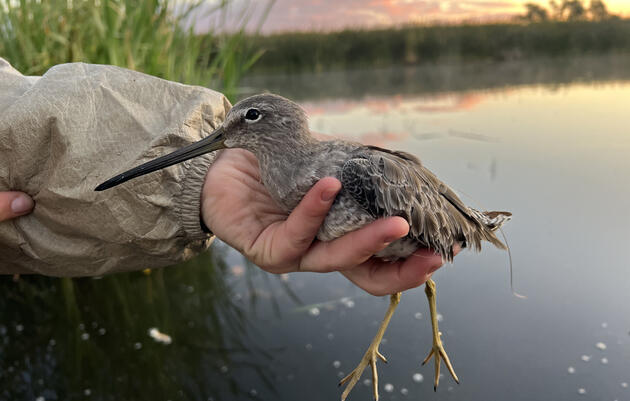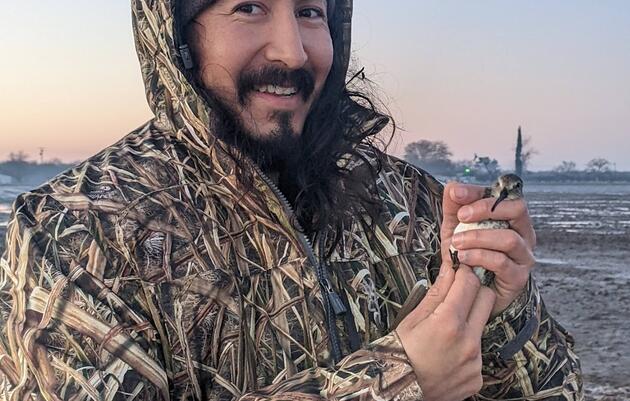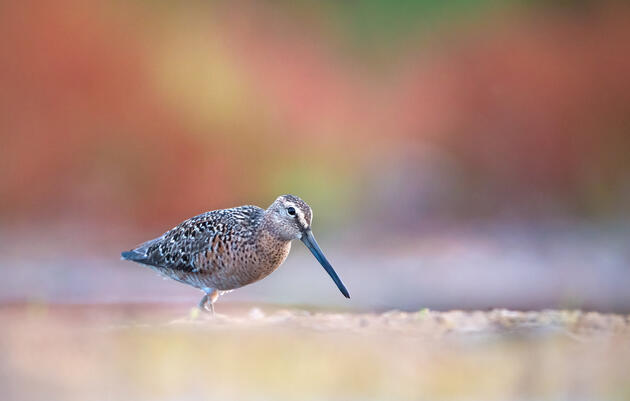Giving Migratory Birds "A Fighting Chance"
Read more about our short film, A Fighting Chance.
California’s migratory birds are a vital part of the state’s natural identity. Each year, millions of birds stop over on the Pacific Flyway – a superhighway for birds migrating between Alaska and Patagonia – making California one of the most important areas for migratory birds on the west coast of the Americas.
Coming together to protect migratory birds
Audubon California is part of an innovative partnership that combines the experience and expertise of three leaders in bird conservation – Audubon California, Point Blue Conservation Science, and The Nature Conservancy – to create a better California home for migratory birds. This Migratory Bird Conservation Partnership seeks to protect, restore, and enhance lands that support bird populations in California. This partnership is working to:
- Enhance the value of agricultural lands and managed wetlands as migratory bird habitat.
- Encourage alternative public and private land management to meet the habitat needs of a greater diversity of species.
- Secure reliable water for wetlands.
- Apply the best science to our efforts.
- Promote policy solutions that will help bolster migratory bird populations and protect and restore their habitat.
Even though California continues to be a haven for migratory birds, the state has seen a steep decline in habitat over the past 150 years. Less than 10% of the state’s original wetland habitat remains today, and the threat of losing more habitat persists. By enhancing the places where these birds rest, feed, and breed – and creating new ones – we can honor our natural legacy and reverse the declines that many of these populations have been experiencing.
The Partnership is currently working in three areas. Ultimately, we will apply the lessons learned in these three initial regions to other areas around the state that are important to migratory birds. The result will be a better California, not just for birds, but for Californians as well.
San Joaquin Valley. The recent San Joaquin River settlement offers an unprecedented opportunity to help migratory birds in this 32,000-square-mile habitat area. We’re working with farmers and wetland managers to protect and restore bird habitat while maintaining the area’s agricultural productivity.
Sacramento Valley. This 27,000-square-mile area supports millions of shorebirds and waterfowl each year. The flooding of more than 300,000 acres of rice lands and tens of thousands of acres of managed wetlands offers many benefits for these birds, and we’re working with growers and land managers to maximize the conservation value of these lands.
Klamath Basin and Modoc Plateau. As we seek policy changes to pave the way for massive river restoration in the Klamath Basin, we are conserving birds by working with private landowners to employ compatible agricultural practices and through conservation easements.
Help us conserve California’s migratory birds
For further information about Audubon California’s efforts to help migratory birds, contact us via email.
Related
Navigating Drought: Understanding Shorebird Impacts Through the Migratory Bird Conservation Partnership's Research
Drought conditions significantly impact winter landscapes by restricting water availability. In drier years, water restrictions lead to reduced habitat for birds, especially shorebirds.
Meet Xerónimo Castañeda
Audubon California's new Working Lands Program Director has a long history in conservation and avian biology
CA Assembly Bill 828 Protects Vulnerable Communities’ Drinking Water & California’s Remaining Managed Wetlands
Ensuring SGMA Doesn’t Leave Small Community Water Systems & Critical Wetlands High and Dry
How you can help, right now
Get Audubon CA in Your Inbox
Our newsletter is fun way to get our latest stories and important conservation updates from across the state.
Donate to Audubon
Help secure the future for birds at risk from climate change, habitat loss and other threats. Your support will power our science, education, advocacy and on-the-ground conservation efforts.
HOTSPOT: Flyover of California's Birds and Biodiversity
California is a global biodiversity hotspots, with one of the greatest concentrations of living species on Earth.






